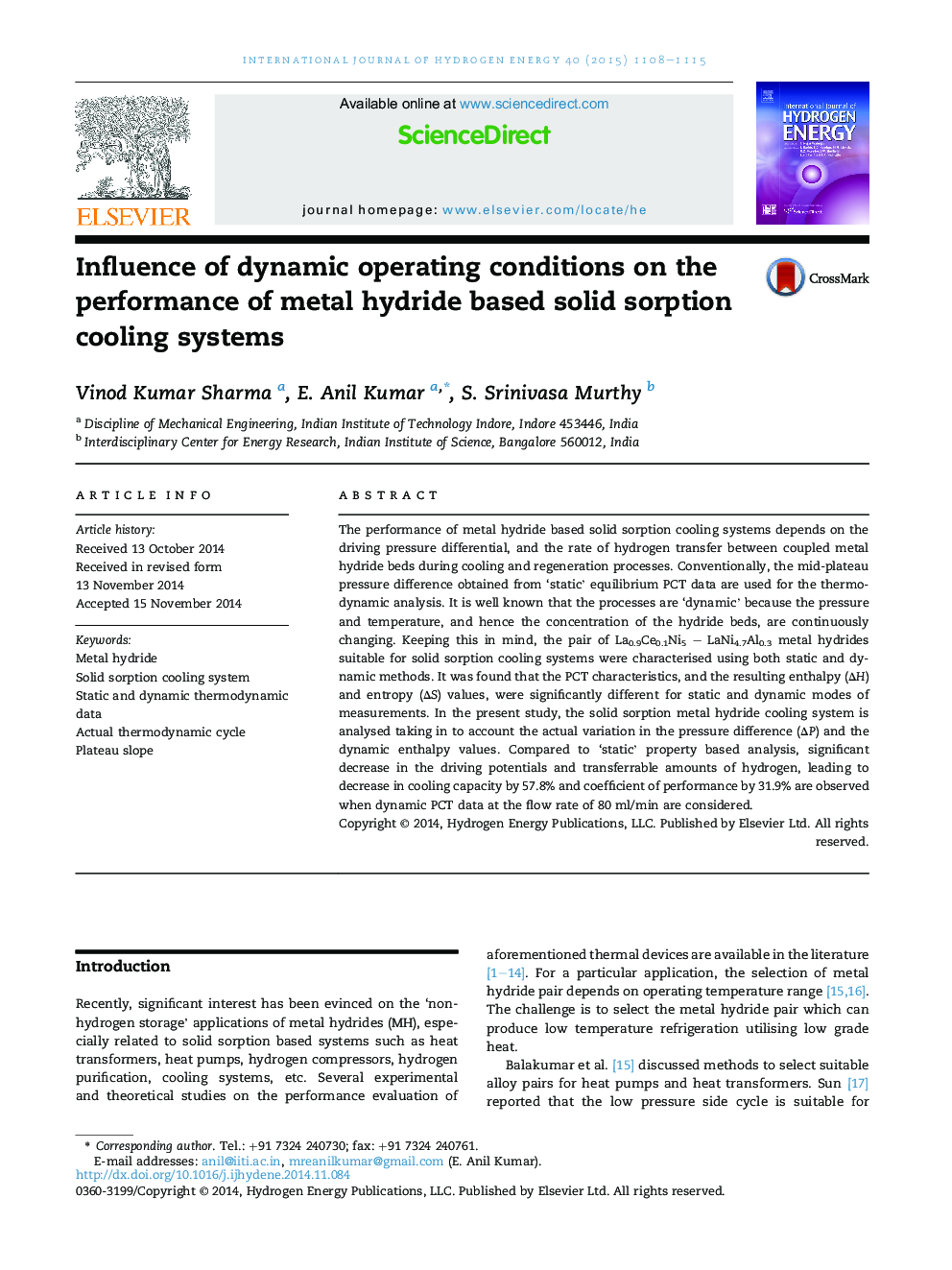| Article ID | Journal | Published Year | Pages | File Type |
|---|---|---|---|---|
| 1270206 | International Journal of Hydrogen Energy | 2015 | 8 Pages |
•La0.9Ce0.1Ni5–LaNi4.7Al0.3 hydrides pair is used for MHCS development.•Static and dynamic PCT data are used for thermodynamic analysis of MHCS.•Static PCT data over-predict the COP of the MHCS by about 31.9%.•Thermodynamic cycles are constructed using actual pressure variation in MH beds.•Actual thermodynamic cycle yields a better understanding of system performance.
The performance of metal hydride based solid sorption cooling systems depends on the driving pressure differential, and the rate of hydrogen transfer between coupled metal hydride beds during cooling and regeneration processes. Conventionally, the mid-plateau pressure difference obtained from ‘static’ equilibrium PCT data are used for the thermodynamic analysis. It is well known that the processes are ‘dynamic’ because the pressure and temperature, and hence the concentration of the hydride beds, are continuously changing. Keeping this in mind, the pair of La0.9Ce0.1Ni5 – LaNi4.7Al0.3 metal hydrides suitable for solid sorption cooling systems were characterised using both static and dynamic methods. It was found that the PCT characteristics, and the resulting enthalpy (ΔH) and entropy (ΔS) values, were significantly different for static and dynamic modes of measurements. In the present study, the solid sorption metal hydride cooling system is analysed taking in to account the actual variation in the pressure difference (ΔP) and the dynamic enthalpy values. Compared to ‘static’ property based analysis, significant decrease in the driving potentials and transferrable amounts of hydrogen, leading to decrease in cooling capacity by 57.8% and coefficient of performance by 31.9% are observed when dynamic PCT data at the flow rate of 80 ml/min are considered.
